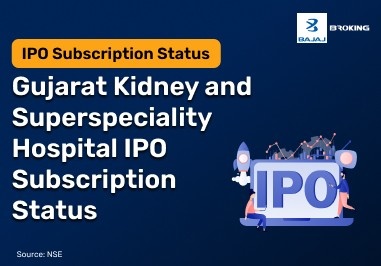The pharma sector has grown considerably in India since our independence in 1947. The growth has been to such an extent that India has emerged as a major exporter of pharmaceuticals in the world.
Today, India is the largest supplier of generic drugs internationally. Our pharma giants have built a reputation for affordable vaccines and generic medications. Overall, the pharma industry can be divided into these categories in India: generic drugs, bulk drugs, OTC medications, contract research and manufacturing, vaccines, etc.
As per the data available from the government, pharma companies in India contribute to more than 50% of the international demand of many vaccines. These companies also supply 40% of the generic demand in the US. Within India, we have around 3,000 drug companies and approximately 10,500 manufacturing units.
More than 4/5th of the antiretroviral drugs used internationally for the treatment of AIDS are supplied by Indian pharma companies. Some of the major pharma players in India include Sun Pharmaceutical Industries, Cipla, Dr Reddy's Laboratories, Divi’s Laboratories, & Lupin.
Introduction to the Indian Pharmaceutical Industry
Historical Development and Growth
If you want to know about the pharma industry in India from a historical perspective, read below:
1911-1970: Prior to 1970, India had a patent regime, which was based on the Indian Patents and Design Act of 1911. This regime recognised process and product patents. During this phase, foreign players had captured the market, as Indian companies had a small share.
1970-1995: The government amended the 1911 act. Consequently, the new act recognised process patents but not product patents. This helped Indian pharma companies to reverse engineer the process of manufacturing drugs and for this, they didn’t have to pay royalties to those who had the original patent. As a result, Indian pharma companies did very well and several foreign players left the country.
1995-2005: Indian companies gained tremendous experience in making generic drugs. They entered the export market and became a major supplier of drugs to many countries.
2005-2018: In 2005, the government introduced product patents and abolished the process patenting system. Consequently, Indian pharma majors were not able to manufacture generic copies of those drugs that were still covered by patents. This gave a boost to foreign investment in this sector. Many foreign companies entered into a research and development (R&D) agreement with Indian companies.
2019-onwards: Today, India has a vibrant pharma sector, which includes active pharmaceutical ingredient (API) manufacturers, formulation manufacturers, biotech companies, and companies involved in contract research & manufacturing services.
Key Players of Pharma Industry in India
1. Sun Pharmaceutical Industries: Headquartered in Mumbai, Sun Pharmaceuticals is a major manufacturer of APIs and pharmaceutical formulations. It exports these products to many countries. It became the largest pharma company in India after acquiring Ranbaxy in 2015.
Additional Read: Sun Pharmaceutical Industries Overview
2. Cipla: Cipla is one of the largest pharma companies in India. It was started in 1935 by Khwaja Abdul Hamied. Since then, the company has grown by leaps and bounds. Today, it is present in more than 80 countries where it sells over 1,500 products.
3. Dr Reddy's Laboratories: Dr Reddy’s is one of the major pharma companies in India. It manufactures and exports many drugs, diagnostic kits, and APIs. It has a presence in biotechnology as well.
4. Divi’s Laboratories: This company is a dominant player in the API segment. Besides, it exports its products to more than 95 countries. It has built a reputation for manufacturing nutraceutical ingredients and generic APIs.
5. Lupin: Another pharma giant from India, Lupin is mainly into manufacturing generic and branded drugs. Besides, it is also into biotech and APIs. It exports its products to many countries worldwide.
Additional Read: Difference Between Demat and Trading Account
Major Pharmaceutical Hubs in India
Regulatory Framework and Government Policies
1. When the government introduced the Patents (Amendment) Act 2005, it gave a push to Indian companies to develop new drugs and enter into agreements with MNCs. As a result, many Indian companies got into joint ventures with MNC pharma companies.
2. Due to the introduction of the said act in 2005, several Indian pharma majors have initiated co-marketing alliances and started outsourcing of research and clinical trials.
3. Under the 12th plan, the government offered tax subsidies to Indian pharma companies to reduce the burden of their R&D costs.
4. The government is also focusing on giving a boost to domestic manufacturing of medical equipments through policy initiatives.
5. Through its production-linked incentive scheme, the government promotes the domestic manufacturing of key starting materials and APIs in India. The government is also promoting the manufacturing of 41 identified bulk drugs in India to reduce the dependence on imports.
6. The government has a scheme to improve the pharma manufacturing capabilities of India. This scheme promotes investment and production in the pharma sector and encourages pharma companies to make high-value goods. Under this scheme, benefits are offered for manufacturing complex generics, bio-pharma, patented drugs or those drugs that are nearing the expiry of their patent.
Trends and Innovations in the Pharma Industry in India
1. Challenges Facing the Indian Pharmaceutical Sector
2. One of the major challenges facing the sector is fake medicines and products. This affects the trust patients and their families have in the Indian pharma sector.
3. As most pharma companies in India are still manufacturing generic drugs, their business depends a lot on the affordability of their drugs. Hence, their business is extremely sensitive to changes in price.
4. Ever since 2005, the government has encouraged Indian companies to invest in R&D. However, investments in R&D require considerable funds. At times, acquiring funds can be difficult.
5. Regulatory compliance with top pharma-importing countries is a huge challenge for Indian pharma companies. For example, the US has stringent regulations for the manufacturing of pharma products. If a company wants to export to the US, it has to invest a lot in quality standards.
6. In addition to the point above, if a company wants to do research in pharma to develop a new product for the export market, it has to follow the laws of that country, which may require considerable investments.
7. In a nutshell, Indian pharma companies have to strike a balance between compliance and innovation, which is a challenge.
Additional Read: What is Trading Account: Definition, Types & Benefits
Conclusion
If you are considering opening a trading account, you can think about investing in the pharma industry in India for many reasons. One, their business does not depend much on ups and downs in an economy. As healthcare is a basic need, people have to spend on medicines even when the economy is sluggish. Two, many Indian pharma companies have done extremely well financially over the years. So, investors can consider them for long-term investment.
Disclaimer: Investments in the securities market are subject to market risk, read all related documents carefully before investing.
This content is for educational purposes only. Securities quoted are exemplary and not recommendatory.
For All Disclaimers Click Here: https://bit.ly/3Tcsfuc














